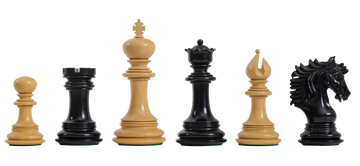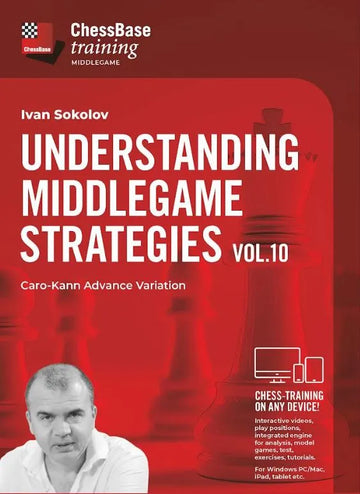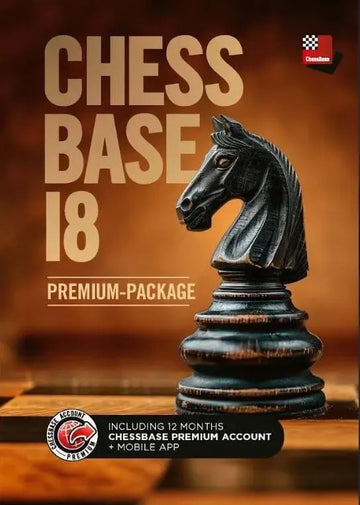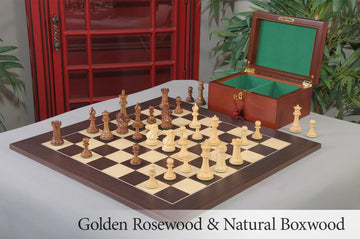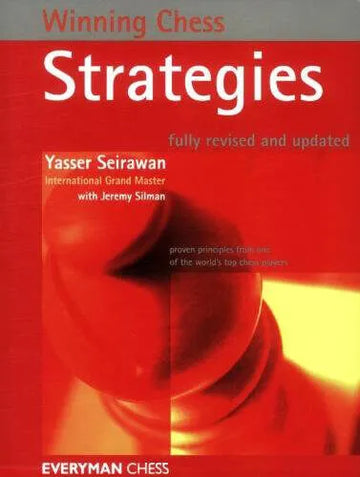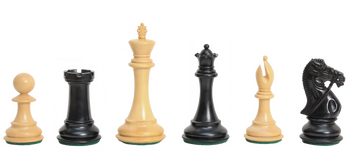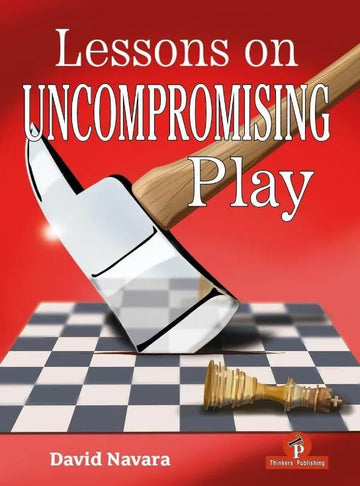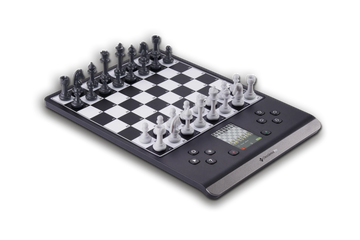A Beginner's Guide To Chess Strategy
Chess strategy is the art of having a plan.
For beginners looking at the blank canvas of a chessboard, it can feel impossible to know how to create a strategy and execute it. Chess strategy requires understanding the basic principles of the game, its different stages, and flexibility when your plan isn’t working.
In this article, you can find a definition of strategy in chess, the most important principles to help you make strategic decisions on the board, and a step-by-step plan to create your own approach to the game.

What is Strategy in Chess?
A strategy is a plan to help you achieve specific goals. Chess strategy is the creation of plans to help you win the game. While the ultimate goal is to win the game, chess players must break down their plans into manageable steps. The primary objective of a chess strategy is typically to gain an advantage at a specific stage of the game.
For example, in the opening, you may gambit a pawn to gain quicker development and create earlier threats against the opponent’s king. This concept is exemplified by openings like the Scotch Gambit and the Danish Gambit.
In the middlegame, your plan may be to damage your opponent’s pawn structure and transition to an endgame. Alternatively, you may want to be more aggressive, building pressure on your opponent’s king.
In the endgame, your plan may be to activate your king and advance your pawns. Perhaps by capitalizing on any minor advantage through positional play.
This may sound like a lot to consider, but as you learn the principles of chess and the skills of a good player, thinking strategically becomes much easier. Eventually, your ability to develop a plan will become second nature.
Strategy vs Tactics
Most people think of chess as a game of strategy. The association with the military, its popularity with conquerors, and the intense mental calculation all support this perspective. Nevertheless, the game is more often decided by tactics, especially for new players.
Unlike strategy, tactics are short combinations that give you an immediate advantage. Common tactical motifs include pins, forks, skewers, and discovery attacks. For beginners, chess games are often won or lost based on blunders and who can find effective tactics to win material or achieve a decisive positional advantage.
This is why one of the most important things to remember when mastering strategy is to stay flexible. Coming up with a plan and executing it well will quickly make you a better chess player. However, focusing too much on one goal or idea may well cause you to lose the game if you do not continually reassess the position.
Related: Chess Strategy Vs Chess Tactics: Key Differences
The Basis of Chess Strategy
Before you can make an effective plan in chess, you need to understand some basic principles of the game. You may be a natural strategic thinker, but even chess prodigies have to study chess theory for thousands of hours to truly master the game.
As a beginner, you can quickly develop as a chess strategist by understanding a few fundamental ideas and incorporating them into your game.
Chess Principles to Help You Build Your Strategy
Chess theory has been around for hundreds of years, and thousands of books have been written on the subject. Nevertheless, there are basic tenets that are easy to grasp and make a massive difference to how you think strategically in your game.
Develop Your Pieces and Control The Center
Generally, opening strategy involves developing your pawns and pieces to control and protect the central squares. The most common opening move is e4: a pawn strikes into the center of the board and controls the d5 and f5 squares.
Of course, there are many ways to develop your pieces, but doing so effectively can put you in a strong position early in the game. A few good practices include:
- Developing with threats. Getting pieces into the game at the same time as threatening your opponent by attacking vulnerable pieces, creating pins with the bishops, and building pressure on key squares.
- Developing your pieces to protected squares. Protecting your central pawns and developing your pieces to safe squares makes it more difficult for your opponent to create threats.
- Avoid moving the same pieces twice. There are many exceptions to this rule, but generally, it is good practice to develop most of your pieces before moving them again.
King Safety
A key step in development is often castling your king. This brings us to the vital issue of king safety. One strategic error players often make is focusing on their plan of attack without protecting their most crucial piece.
Beyond castling, king safety involves scanning the squares and pawns near your king for checks and threats, and keeping an eye out for potential sacrifices.
Strong Pawn Structures
Pawn structures play a significant role in chess strategy. How your pawns are connected or disconnected will often determine the outcome of an endgame. With this in mind, pay close attention to how your pawns are positioned throughout the openings and middlegame.
As a general rule, structural weaknesses include:
- Doubled pawns (below in green)
- Isolated pawns (below in orange)
- Backwards pawns (below in red)
Sometimes you have to decide between various weaknesses and strengths in a chess position. For example, doubled pawns may give you an open file that could be more important in a specific position.

Piece Activity
How active are your pieces? Bishops, knights, and rooks are powerful pieces, but only when positioned actively. A bishop locked in behind its pawns is close to useless, as is a rook behind an uncastled king. On the other hand, a fianchettoed bishop can control a huge diagonal, a centralized knight attacks 8 squares, and a rook on an open file is a huge strategic advantage.
Creating piece coordination on active squares will give you many more tactical opportunities.
Create Attacks
This involves careful calculation and planning. Simply attacking a piece that can easily move is not the same as calculating a legitimate threat. Creating real threats often involves spotting vulnerable pieces or pawns in your opponent's position and gradually increasing pressure. As you strategize to threaten your opponent's pieces, always keep your eyes open for tactics and scan to see if your opponent has made an obvious mistake.
These are just a few key principles in chess that can help you build a plan of attack. The more you learn, the more accurate and effective your strategy will become.
Beginner's Chess Strategy: Creating a Plan
Being a strategic chess player means always having a plan. But what does that actually mean?
Unlike tactics, opening variations, and combinations, strategies are not based on calculating move by move, but on long-term planning. They involve devising a flexible set of steps to achieve your goals. Within your strategy, you must always be prepared to adapt to new circumstances and adjust your plan as needed.
As such, you will likely have to come up with several different plans that sum up your strategy throughout the game. For example, if you notice an imbalance in the position, your plan will describe how to capitalize on it.
Say you have forced your opponent to lose their castling rights, and their king is stuck in the middle of the board. Your strategy could be to develop quickly and create attacks against the king to win material or find checkmate. Within this strategy, you will need to carefully calculate your moves to execute it successfully. The benefit of this strategic thinking is that it helps you consider and direct your moves towards a specific purpose. Even if things go wrong, it is always better to have a plan.
Strategy Practice
Here is a middlegame position. White is very slightly better, but Black is about to capture their pawn on d5.

There are many things that White can do here. They can trade off all of the pieces and try and win in the endgame, perhaps winning the weak pawn on e7. They can play it safe and go for a draw. Or they can be aggressive and advance the pawns against Black’s castled king, creating a major threat but also weakening their own king.
To find a good strategy, White needs to identify the strengths and weaknesses in the position. The main issue? Their central pawns are doubled and isolated, making them targets. Therefore, the strategy must address how to mitigate this imbalance.
The best move in the position is d6. Black’s only good move is to recapture. Just like that, White has undoubled their pawns, created an isolated pawn in Black’s structure, and created the opportunity to pin the knight to the rook. Once a player understands the problem of the doubled pawns, this move might well occur to them as part of a strategy.
Calculating everything can be difficult, but understanding a position and devising a plan based on it can make decisions regarding individual moves much easier.
Your Next Steps to Becoming a Strategic Chess Player
To test your strategic abilities, analyze chess positions and devise a plan of attack. You can use your own games, those of professional players, or simply set up a position on a chessboard.
Aim to evaluate the position and decide how you want to proceed. Sometimes, writing down your assessment and then creating a step-by-step plan can help you become more comfortable with the skill. Chess engines and analysis boards can help you explore how different plans might proceed.
Whatever your chess level, playing with a plan is the best way to improve and enjoy the game.

